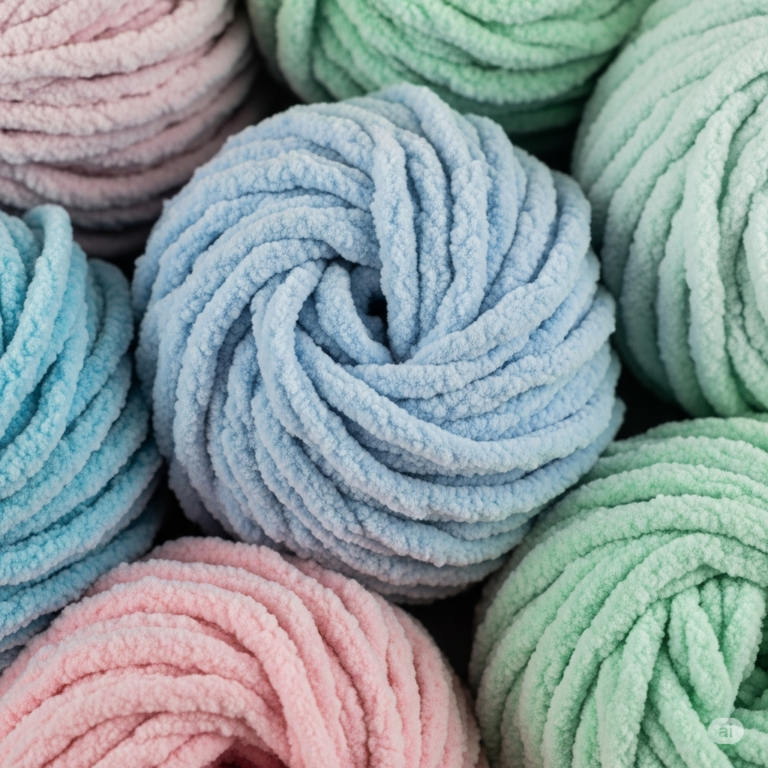Introduction
In the world of textiles, few fabrics offer the same level of plush comfort and visual richness as chenille. Derived from the French word for “caterpillar,” chenille’s signature look and feel come from its fuzzy, velvety surface. Revered for its warmth and softness, chenille has graced homes, wardrobes, and artful creations for decades. Whether you’re wrapping yourself in a chenille blanket or admiring its sheen on a cozy armchair, this textile brings both elegance and ease into our everyday lives.
A Brief History of Chenille
Chenille originated in 18th-century France and was initially made by weaving fabric and then cutting it into narrow strips. These strips were then twisted together to create a yarn with a soft, raised pile. While early production methods were quite labor-intensive, technological advancements during the 20th century allowed chenille to be manufactured more efficiently.
In the 1990s, chenille made a fashionable comeback in home décor and clothing, becoming especially popular in throws, bathrobes, and sweaters. Its plush texture and slightly iridescent look made it a go-to material for adding a touch of luxury without an excessive price tag.
What Makes Chenille Unique?
Chenille stands out because of its fuzzy pile and shimmering appearance, which is achieved by the way the yarn reflects light. The texture is created through a special manufacturing process where short lengths of fiber (called the “pile”) are placed between two core yarns and then twisted. This gives the fabric its characteristic “caterpillar” look and feel.
Key properties include:
-
Softness: One of chenille’s defining traits is its incredibly soft and comforting touch.
-
Sheen: The fabric often has a subtle, elegant shine due to the way the fibers catch light.
-
Durability: Despite its softness, chenille is quite durable and long-lasting when cared for properly.
-
Versatility: It can be used in everything from upholstery to fashion garments.
Applications of Chenille
1. Home Décor
Chenille is a favorite for interior designers because it adds instant warmth and sophistication to any room. You’ll commonly find it used in:
-
Cushions and Pillows: Perfect for adding a cozy, decorative touch.
-
Throws and Blankets: Popular for their warmth and luxurious texture.
-
Upholstery: Ideal for sofas, chairs, and ottomans due to its soft yet sturdy nature.
2. Fashion and Apparel
Its softness and warmth make it an excellent choice for:
-
Sweaters and Cardigans: Often chosen for their comfort and unique look.
-
Scarves and Shawls: Lightweight yet warm.
-
Bathrobes and Loungewear: Provides the ultimate cozy experience.
3. Crafts and DIY Projects
Because of its texture and bold visual appeal, chenille is a favorite among crafters. It’s often used in:
-
Quilting: Adds softness and dimension.
-
Embroidery Projects: Especially popular for textured accents.
-
Rugs and Mats: Offers a soft step and visual interest.
Advantages of Using Chenille
1. Aesthetic Appeal: The slight shimmer and velvety texture make it a visually pleasing fabric that enhances any space or outfit.
2. Versatility: Its wide range of applications—from home décor to fashion—makes chenille an all-rounder.
3. Warmth: Chenille is excellent for cold-weather items due to its dense and fluffy structure.
4. Rich Colors: The way chenille yarn absorbs dye ensures vibrant, long-lasting colors that do not fade easily.
How to Care for Chenille
While chenille is durable, it requires a bit of care to maintain its beauty:
-
Washing: Most chenille items should be hand-washed or cleaned on a gentle machine cycle in cold water. Always read the label.
-
Drying: Avoid high heat.
-
Ironing: Use a low heat setting if ironing is necessary, but avoid pressing directly on the pile.
-
Storage: Store folded rather than hung to prevent stretching.
Challenges and Considerations
Despite its many benefits, chenille has a few drawbacks:
- Pilling: With frequent use, chenille may develop small fabric balls or “pills.”
-
Moisture Sensitivity: Excess moisture can damage the pile, so care should be taken to avoid spills or damp conditions.
These issues can be mitigated with proper care and maintenance, making them minor concerns compared to chenille’s many advantages.
Environmental Impact and Alternatives
Traditional chenille is made from cotton, acrylic, rayon, or polyester. Cotton chenille is more eco-friendly compared to synthetic options but requires considerable water for production. Polyester and acrylic versions are more durable but are derived from petrochemicals, making them less sustainable.
Eco-conscious consumers may opt for:
-
Organic Cotton Chenille: Grown without harmful pesticides.
-
Recycled Fiber Chenille: Made using repurposed yarns or fabrics.
-
Bamboo Chenille: A newer, sustainable option with similar softness.
Manufacturers are increasingly exploring ways to reduce the environmental footprint of chenille production through sustainable sourcing and cleaner dyeing methods.
The Timeless Allure of Chenille
Chenille’s enduring popularity speaks to its unique blend of softness, luxury, and utility. Whether used in a statement fashion piece or a cozy living room throw, it delivers both aesthetic beauty and functional comfort. The fabric’s rich textures and warm tones continue to inspire designers and homeowners alike, making it a staple in modern and traditional settings.
Conclusion
Chenille is much more than just a soft fabric—it’s a symbol of elegance, comfort, and timeless appeal. Its versatility has allowed it to remain a favorite across generations, proving that beauty and practicality can go hand in hand. As consumers continue to seek out materials that elevate their spaces and wardrobes, chenille stands out as the soft thread that elegantly weaves together warmth, texture, and style.

